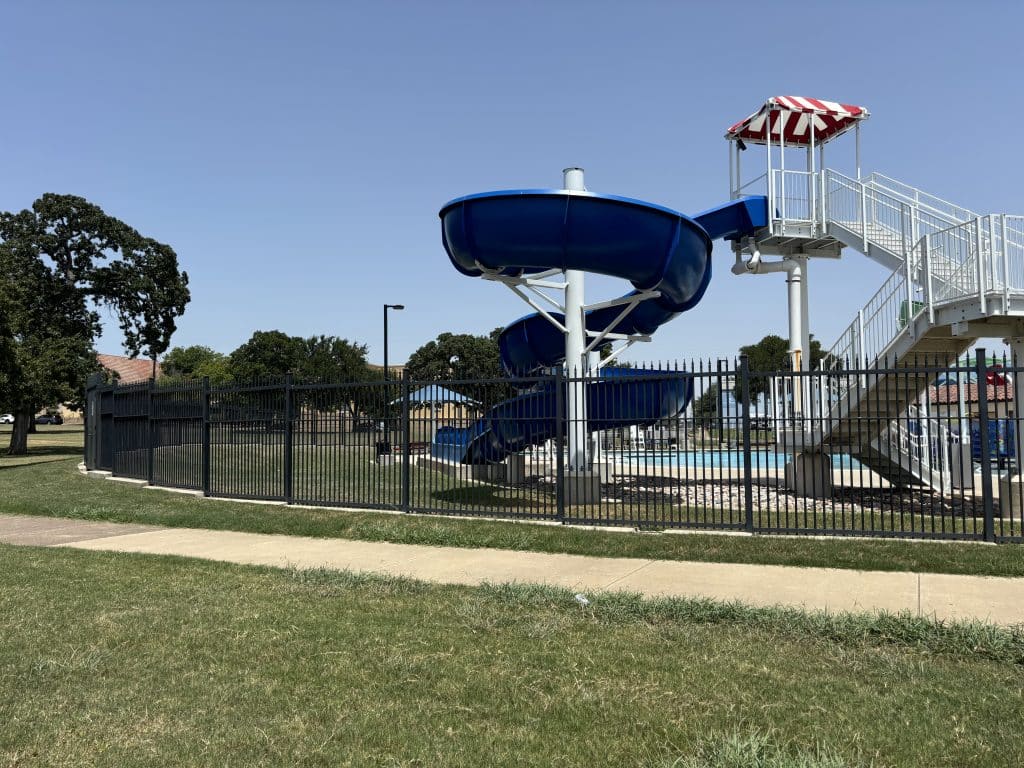Steel Rusts. Wood Rots. Composite Fencing Lasts.

Composite Reinforced Product (FRP) is among the world’s strongest and most durable materials, offering superior sustainability compared to steel, aluminum, or timber. Composite fencing, made in the USA, is especially notable for its low embodied energy—the total energy needed from raw materials through product delivery. Pultruded composite products are composed primarily of glass or silica (white sand), with only 25% resin and other blended components, making them 100% sustainable and eco-friendly.
F&F Composite Group’s FiberFence® pultruded FRP (fiber-reinforced polymer) fencing products are crafted from:
- Glass roving for strength
- Resin for durability
- Additives like pigments and UV inhibitors for longevity
- Surface veil to enhance corrosion resistance, UV protection, and visual appeal
These components work together to provide unmatched strength and durability with key performance benefits:
- Lightweight yet extremely strong
- Corrosion-free with high impact resistance
- Stable dimensions that resist warping
- Electrically non-conductive
- Non-magnetic and non-sparking
- Low thermal conductivity
- Quick installation with standard tools
- RF transparency
With FiberFence®, you gain a fencing solution built to last a lifetime—outlasting steel and wood with performance that meets the highest industry standards.
Recyclability and the Environment
FRP is engineered, rigorously tested, and built to last for decades, significantly reducing waste headed to landfills due to its exceptionally long lifecycle. As a sustainable resource, FRP products are increasingly favored by architects, builders, contractors, designers, commercial property owners, and homeowners alike.
Comparison
FRP vs. Traditional Materials: How Fiber-Reinforced Plastic Stacks Up Against Steel, Aluminum, and Timber
Fabrication and Design
- FRP offers exceptional design flexibility and can be easily field-fabricated using standard carpenter’s tools with carbon or diamond-tip blades, without the need for torches or welding. Its lightweight nature simplifies transport and installation.
- Steel, on the other hand, often requires specialized equipment for fabrication, installation, and maintenance, increasing both complexity and cost.
Resilience
- FRP products exit the pultrusion dies as fully finished, smooth, and durable items that require no additional coating. This manufacturing process yields a product ready for immediate assembly with a tough, maintenance-free surface.
Cost Efficiency
- FRP is non-conductive and offers a high-value, premium-quality alternative competitive with high-grade steel products. FRP installations, such as FiberFence®, benefit from lower initial installation costs and little maintenance expenses over time, making it highly cost-effective across its lifecycle.
- Steel is conductive, requires frequent maintenance, is prone to warping and bending, and will eventually need repainting due to expansion and contraction.
- Wood is often the least expensive initially, but it is highly vulnerable to weathering, pests, and electrical conduction when wet. These issues lead to high ongoing maintenance costs.

